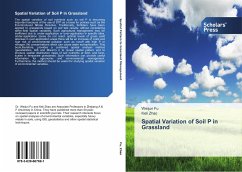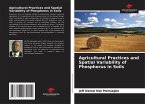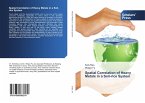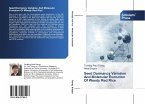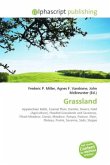The spatial variation of soil nutrients such as soil P is becoming important because of the use of STP as a basis for policies such as the EU-introduced Nitrate Directive. Traditionally, fertilizers have been applied to grasslands based on soil test results, without considering within-field spatial variability. Such agricultural management may be inefficient due to under-application or over-application in specific sites. Under-application zones do not reach optimal levels of grass yield whereas in over-application areas there will be an increase of costs and high risk of environmental pollution such as runoff with high P or nitrogen (N) concentrations which can cause water eutrophication. This book,therefore, provides a combined spatial analysis method (geostatistics, GIS and Moran's I) to reveal spatial pattern and to produce spatial distribution maps of soil nutrients at field- and farm- scales in temporate grasslands. Such information can provide useful information for agronomic and environmental management. Furthermore, the method should be useful for studying spatial variation of environmental variables.

